A screen works as a curtain which can be installed vertically or horizontally. It aims to regulate inner temperature and humidity, reduce heat losses and control solar radiation, whatever the external climate surrounding the greenhouse.
What are the Hortinergy parameters ?

Transparent thermal screen : the major aim is to reduce energy loss. For instance, in order to maintain inner temperature during dark and cold period, it is deployed, thus keeping heat and radiation.
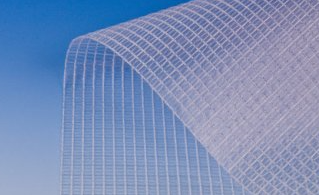
Hereunder a greenhouse composed with a transparent screen.
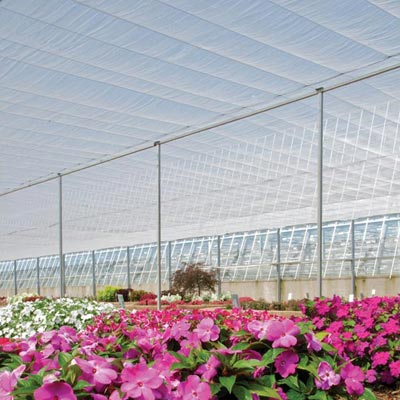
Thermal screen can be regulated according to 2 parameters:
- External solar radiation
- Temperature difference between outside and inside
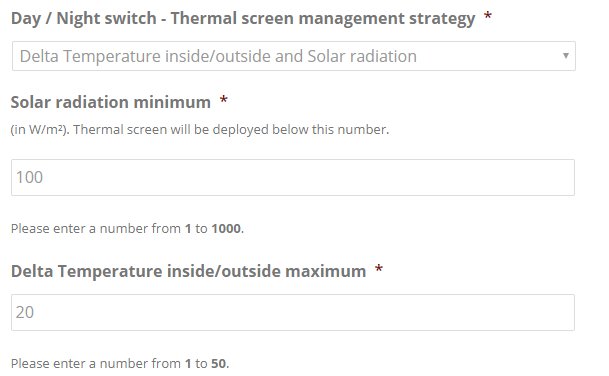
During the night, morning, evening or cloudy days, when the incoming solar radiation is below 100 W/m², it is deployed to reduce heat losses and to let the solar radiation get in. On the other hand, when the incoming solar radiation is above 100 W/m², the thermal screen is undeployed.
As regards the temperature difference between outside and inside, the screen is deployed if the difference is higher than the setting and undeployed if the difference is lower
For tomato crop, standard values for a temperate climate such the Netherlands are:
- External solar radiation: 100 W/m²
- Temperature difference between outside and inside
Shading screen : it is used to reduce direct radiation and the overall light level in the glasshouse to reduce overheating and to avoid burning leaves.
There are 2 types of materials for shade screen:
- aluminum
- white strips diffuse
There are also 2 types of structure for shade screen:
- open: space is open between shade strips -> good for ventilation, limited thermal effect
- closed: high thermal effect, chimney is required for ventilation
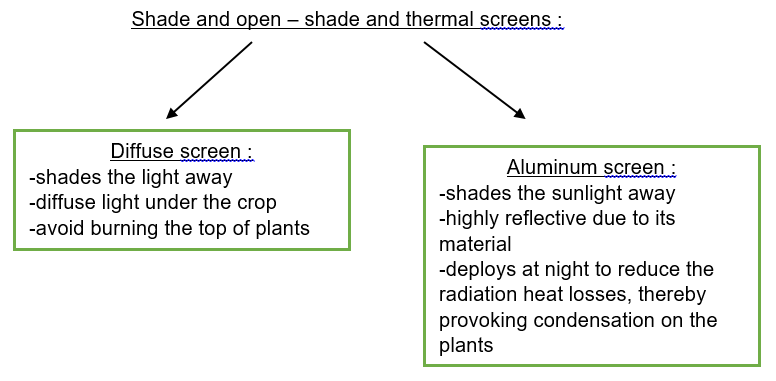
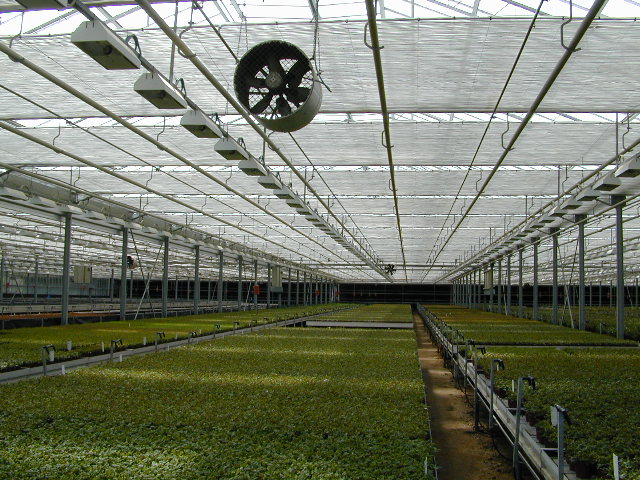
Hereabove a thermal and shading screen inside a greenhouse in northern Europe.
For instance, when incoming solar radiation is above 500 W/m², the shade screen is deployed.
Hereunder a shade and open screen with aluminum strips.
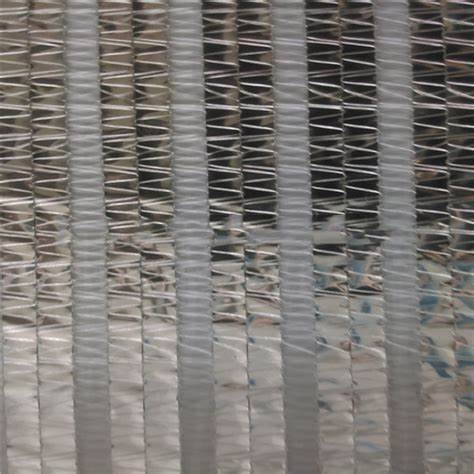
With an open shading screen, a natural ventilation of your greenhouse is possible. However, as regards the closed shading screen, a chimney is required to get a natural ventilation.
Hereunder an example of thermal shading screen with a chimney :

With Hortinergy, in order to choose the shade and thermal screen, you may tick the box yes to the question following question :

Black out screen : this screen prevents the plants from incoming solar radiation, from 99 to 100%. It is mostly used for the control of photoperiod and the prevent of light pollution to ensure an ideal growth of cannabis crops and ornamental plants.
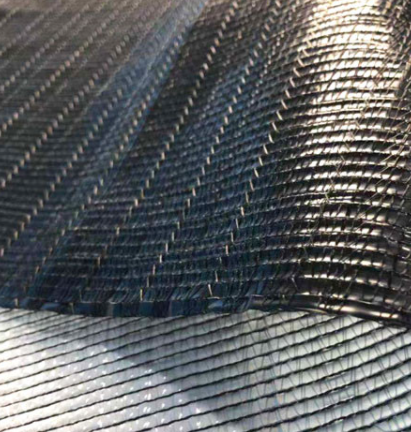
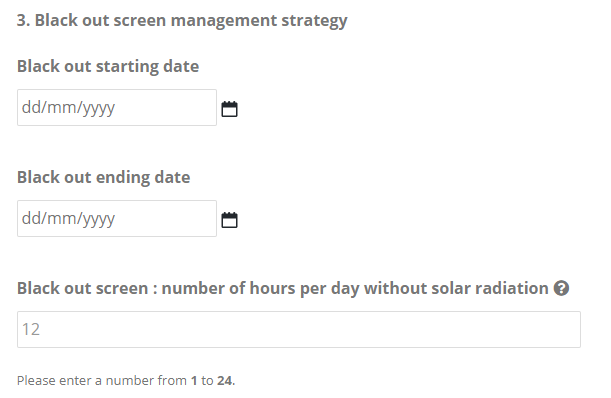
Let’s take as an example the crop of cannabis, which needs 12h of lighting a day.
In summer, the day light period is higher than 12h, therefore blackout screens are deployed to day length to 12h in the greenhouse
In winter, the day light period is lower than 12h, therefore assimilation lighting is required to reach 12h. Then black out screen is required to prevent the environment from light pollution. Thereby, the black out screen is pulled when light intensity is below 20 W/m².

Comments are closed.